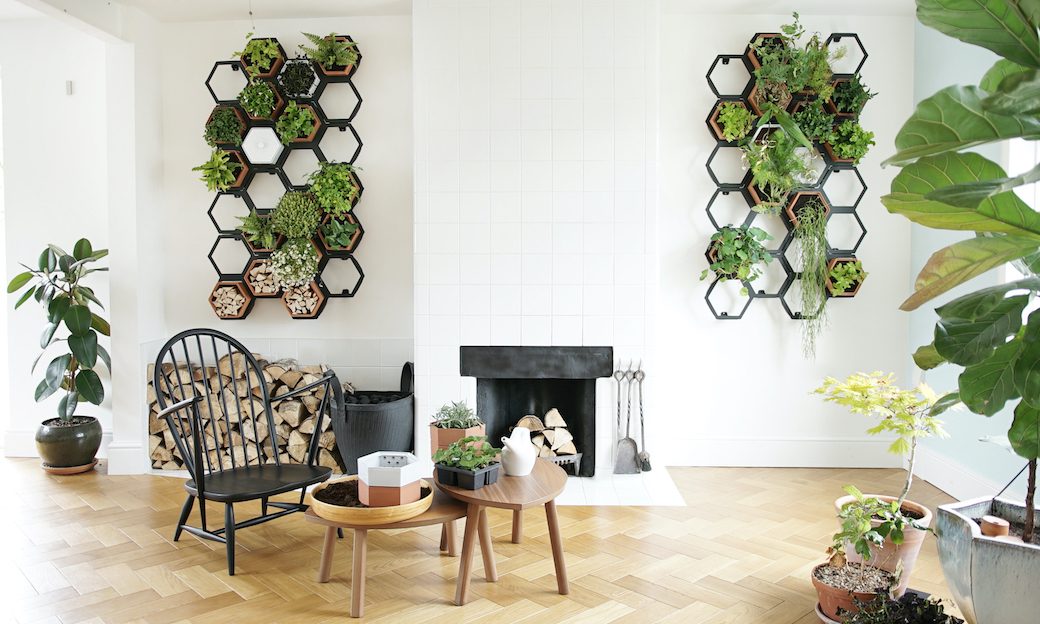This summer, as our tiny back garden has sprung into life, I’ve realised how much this greenery has impacted on our mood during these strange months we’ve all been living through. I don’t think I’ve ever appreciated this as much. And while I’m no gardener (that’s the Other Half’s job), I’m looking for ways to bring that greenery indoors all year round. As once we move into autumn, far less winter, I’m going to miss my leafy view and the sense of calm it brings. Which is why this new modular living wall system from Horticus caught my eye.
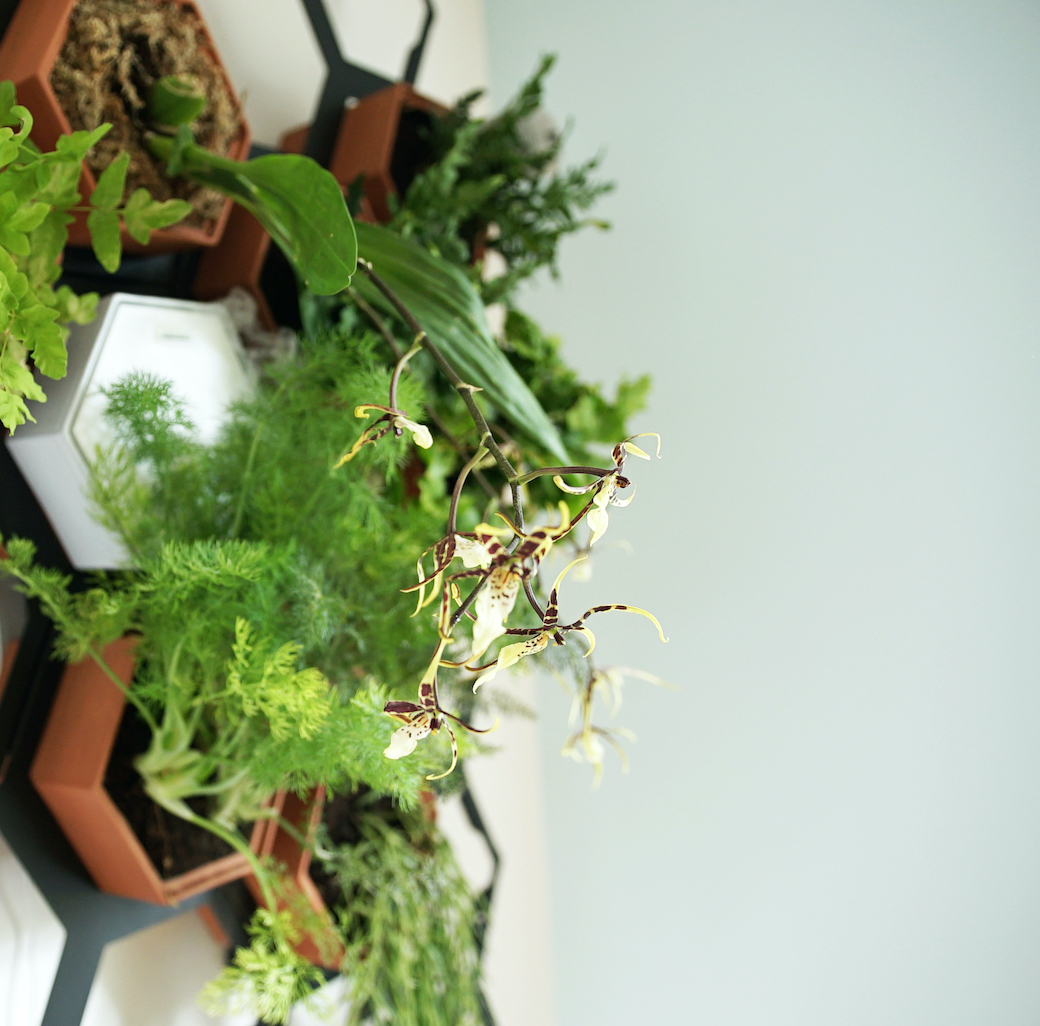
While we’ve all seen living walls before, this one feels accessible as you can start small and build up your green wall in sections, beginning with three planters and one frame with a Small Kit, or six planters and three frames with a Medium Kit, all the way up the Large Kit with twelve planters and six frames and the super-sized Extra Kit, which has twenty four planters and twelve frames. Starting small and then growing your green wall also helps when budgeting this feature, and once you introduce more elements, there are so many layout options to play with.
And these living wall kits look great as they combine terracotta pots with a laser cut steel metal frame, creating a really pleasing contrast between the rustic nature of the pots and the crisp, architectural form of the frame. I was intrigued by this new collection, so I asked the founder of Horticus, Anna Lisovskaya, if she could tell me more about the concept behind this design.
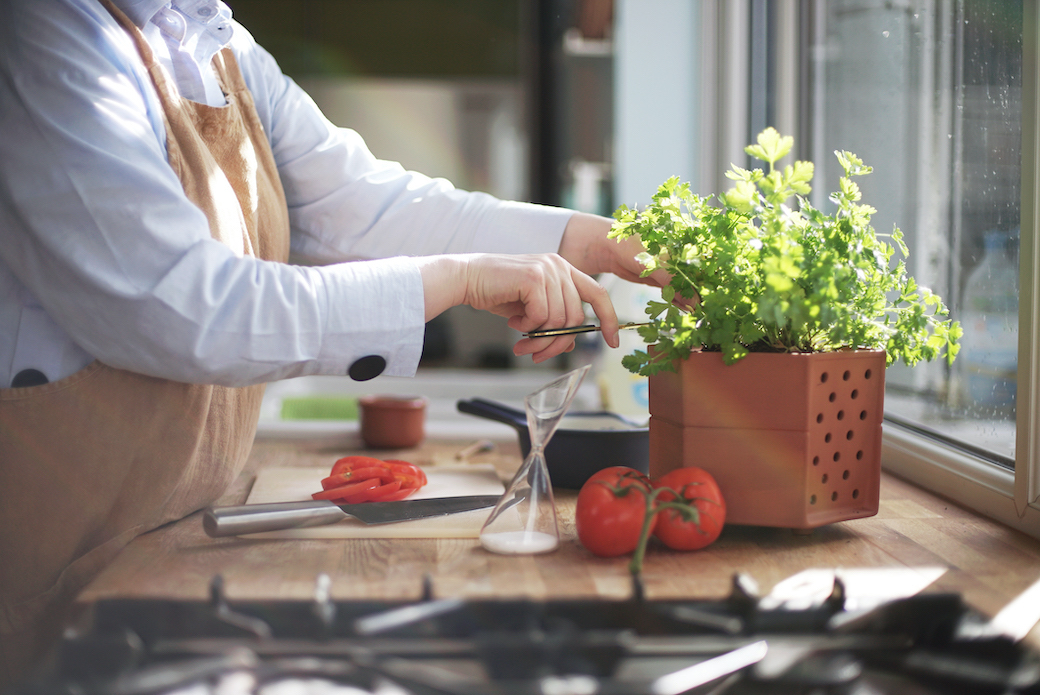
Thanks for agreeing to chat about Horticus, Anna. Clearly we’ve been seeing more green walls in the last few years, particularly in commercial spaces, so what inspired you to create Horticus?
Ironically it started with the outdoors rather than indoors. My friend moved to a new home and his outdoor space was basically an alley. It was a typical Victorian terrace with a passage wide enough for one person to push their bin through. It reminded me of my parents’ garden, which I called a ‘stone sack’. It was a 6 sq/m area, with a brick wall at the end and the rest was completely covered in concrete. In summer it would get incredibly hot and in autumn cold and damp. My mother’s solution was pot gardening. It was a lovely green space, but it reduced the entertainment area by half. Our BBQs were very exclusive and intimate, to say the least.
Having floor standing pots with climbers to create a nice view from the window could have been a solution to my friend’s alley garden, but it was somewhat inconvenient; the pots would get in the way of the weekly task of dragging the bin. Living wall suggestions were raised, but the cost was prohibitive and installation complex, while you still would have a unit at the base to contend with. Then there’s the fear: what if I spend all this money and it dies?! Or it will get patchy and there will be parts not looking so great – what do I do then? If I move home, I must leave my beautiful, nurtured creation behind. Let’s face it, we get attached to our plants.
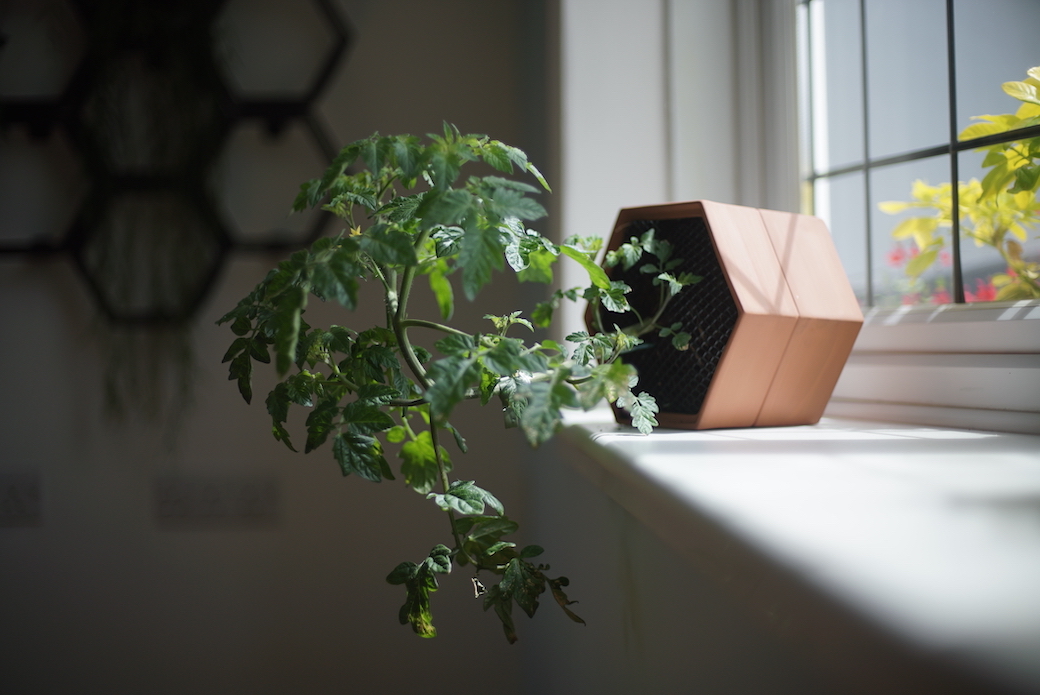
All these questions and worries made me reflect on what makes pot gardening so attractive yet a little inconvenient. Firstly, it’s simple, manageable, easy and most importantly it’s familiar. All of us at some point have done a little bit of it. Things go wrong, no worries; wash the pot, put aside till next time. No more dead patches you don’t know what to do with. If I want to move my garden with me, I can load it up in the van and go. It’s a lovely entry point to gardening with a small learning curve, but in a city setting with a steadily reducing living footprint it does eat up your space quickly. That’s when the cogs for Horticus started turning.
When did you launch?
Horticus was launched last September at London Design Fair.
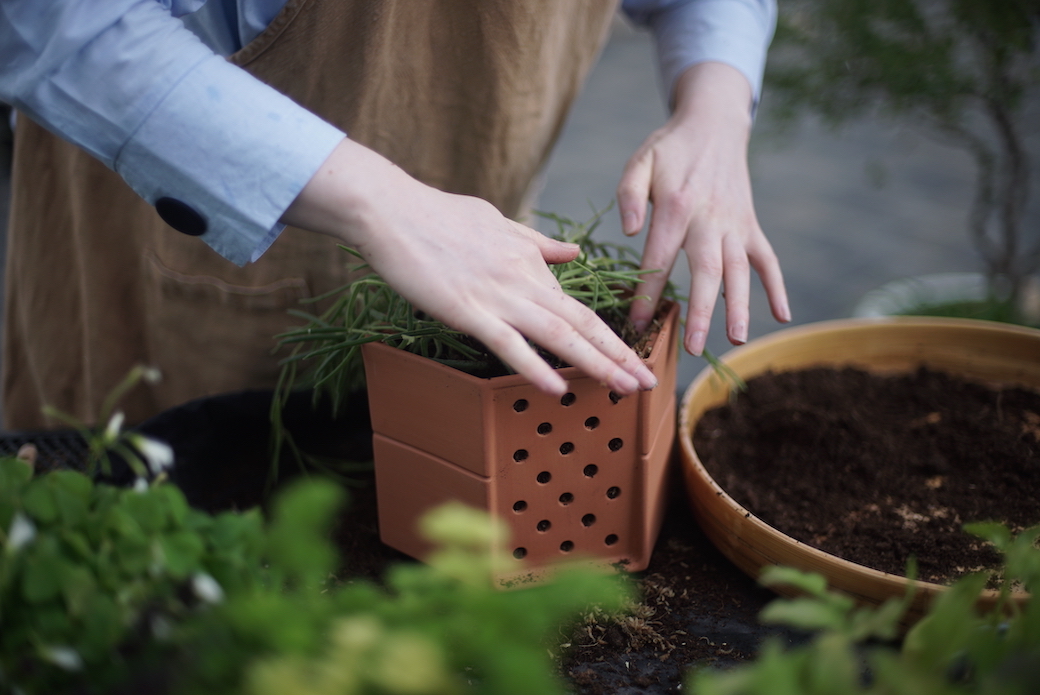
Where did you find your inspiration?
It came from a mix. People who are experts in their field like Patrick Blanc, nature, and surprisingly, limitations. It may be a problem I faced, budget, space I worked in, materials, equipment access, time – all these boundaries made me open to solutions I wouldn’t have normally considered, and as such yielded interesting results. It’s not easy and often frustrating, but all these elements to this date dictate and direct the project.
I love that you’ve created a range that can evolve through time, starting small and then growing and growing – was that always a key factor when considering Horticus?
It happened naturally. I don’t believe I’ve consciously set out to do it. The main idea was around being able to allow people to fit living walls into whatever space they had, which meant being flexible and that could only be achieved through modularity. So, the fact that you can then add additional units and grow your living wall at your own pace was a happy accident. However, it did make us think what else can we add to the wall. That’s how the idea of additional pods like light, speaker and humidifier came about. They just felt like a nice addition that made sense.
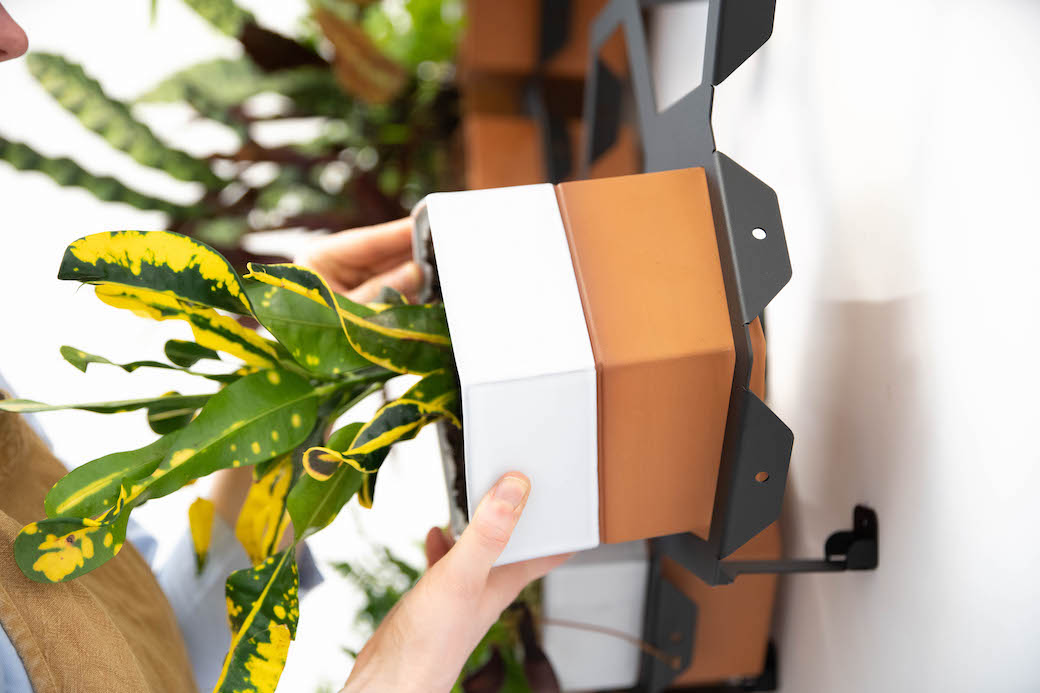
What led to your choice of materials?
One of the top problems with plant survival is over watering. We tend to love our plants to death. Terracotta is known to be naturally porous, it has an ability to absorb water, like a sponge, and it provides air to the roots, unlike plastic pots. The frame needed to be light and rigid to support a fully planted and watered pot, so laser cut and folded steel was the solution.
The interesting element here is the relationship between terracotta and steel. Terracotta is imperfect. It moves, shrinks and deforms during every stage of the manufacture and our vision for the product was to look clean and precise, like the frames. So we had to fit this natural material that behaves imperfectly and more or less unpredictably, into this perfect and precisely laser cut frame.
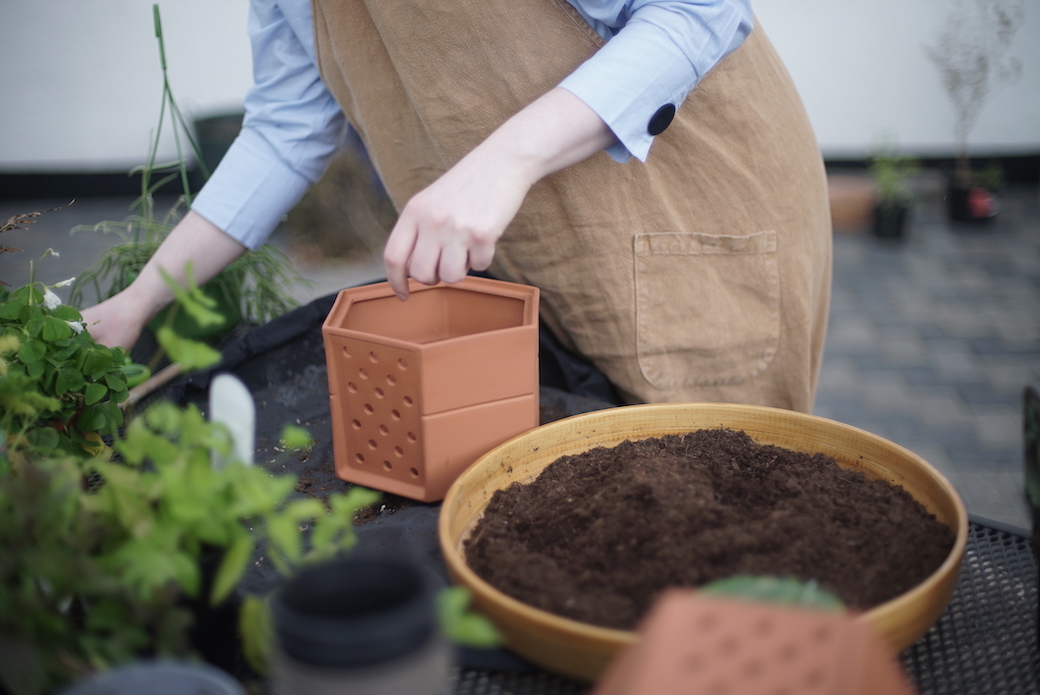
If someone is interested in creating a living wall, is there any advice to consider regarding placement or what kind of spaces work best?
You can put your living wall almost anywhere; what it really comes down to is the right plant for the right spot. To pick the right spot or the right plant you need to consider the following three points: light, temperature, and your care habits. If you reference your choice against this check list, you are unlikely to end up with a living wall you can’t sustain.
If you wish to green up your hallway, choose plants that are tough and can cope with low light, draughts and fluctuating temperatures. Got a sunny bathroom? Choose orchids, hoyas, and monkey jars etc – basically you can go super exotic as the bathroom will offer natural humidity, warmth and a lot of light. Shady bathroom? Choose plants that are ground dwellers like fittonias and prayer plant. I am in the process of building a guide on our website with a list of plants that would help people make easier and better choices. We can also suggest what plants would be good for your home through our design service.
Something to bear in mind with plants: try to avoid placing your living wall above radiators. They tend to dry out foliage and damage plants, especially during winter. If you do, I recommend placing a damp towel on the radiator to create your own humidifier for the plants – incidentally it’s great for your skin too.
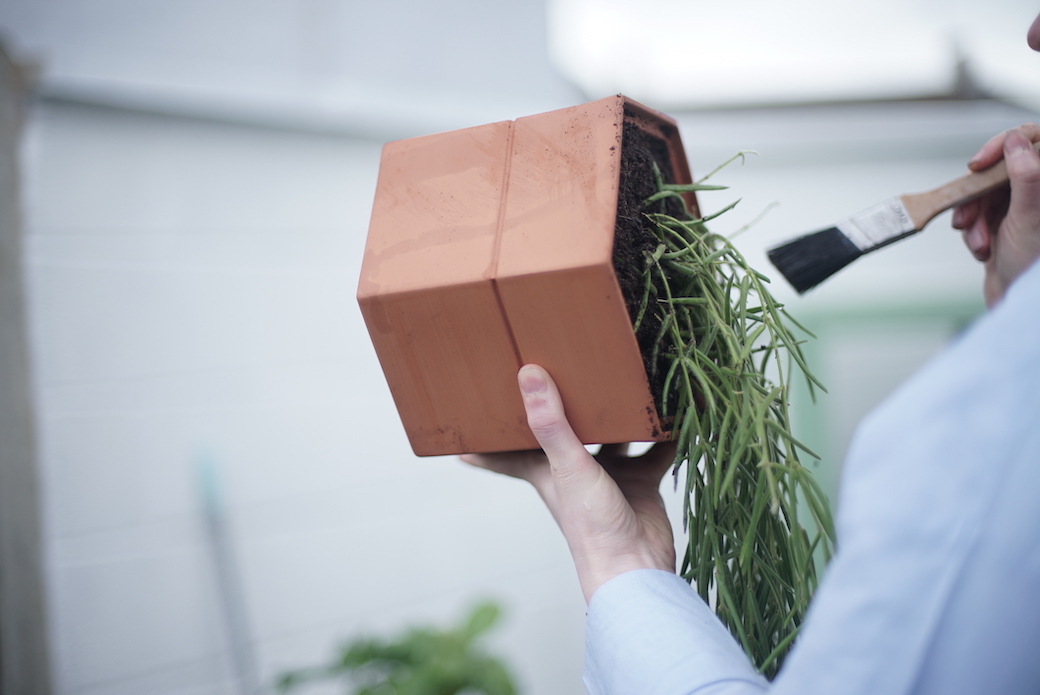
Also group your plants, which is effectively what a living wall does. Many people buy just one pot for this room, another for that, and I might pop one over here. Then what happens over time is that some of the pots get inevitably forgotten, as we lose the excitement for running from one room to another – it’s a lot of work! Grouping helps with natural humidity for the foliage as it slows down water loss. Plants create their own little atmosphere. The job of watering is a lot less taxing as the plants are all together, you are also unlikely to forget any of your pots. From a styling point of view, grouped green corners look so much better at home, like a mini oasis.
There is so much help and advice online that it feels impossible not to be able to find the answer.
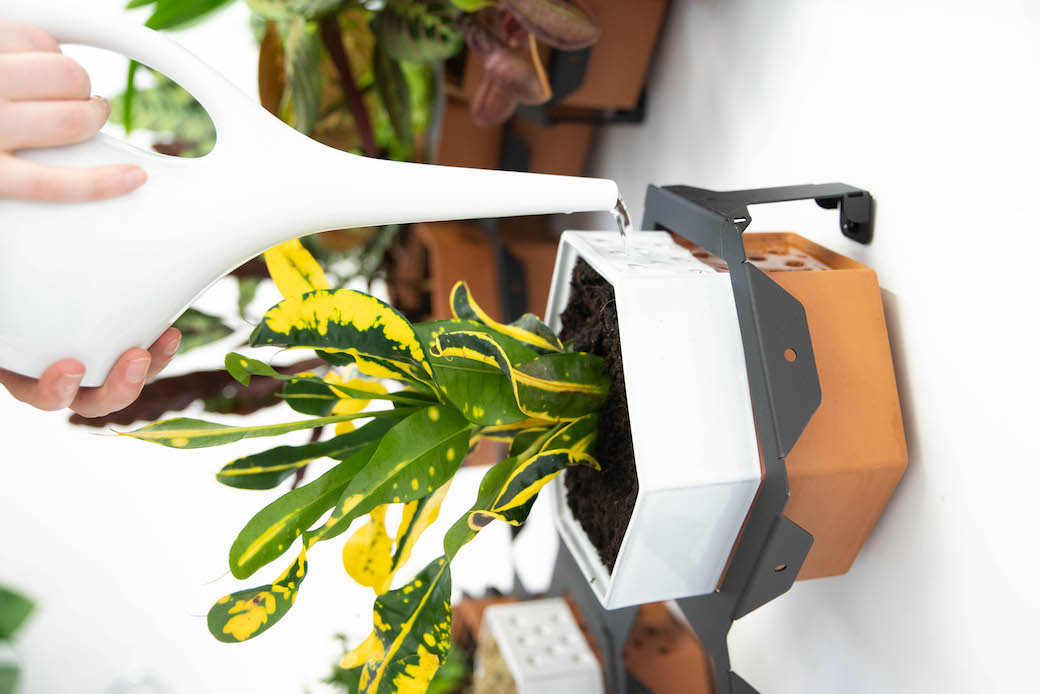
Can you tell me a little about the design service you offer?
We’ve noticed that some of our customers hesitate when it comes to choosing the right size kit. So, to bring confidence to their choices, we offer a design service where three different 3D layouts are suggested for their intended space. The design service fee (£25) is refunded when the order is placed.
I noticed the new pods that are mentioned on your website – can you tell me a little about those?
These are in the prototype stage. We are currently getting people to vote on our website which pods would they like to see us release next – the light and speaker are leading the way.
There are more technical complexities with delivering these options, especially with our speaker. We were initially considering developing just interchangeable fronts; that way any planter can be converted into a light, a speaker or a humidifier. But I think this may not be achievable. For example, with the speaker, terracotta is difficult to deal with acoustically. We need to find a strong manufacturing partner who would be interested in collaborating with us. If there are any speaker, lights, or humidifier manufacturers that read this, please reach out to us.
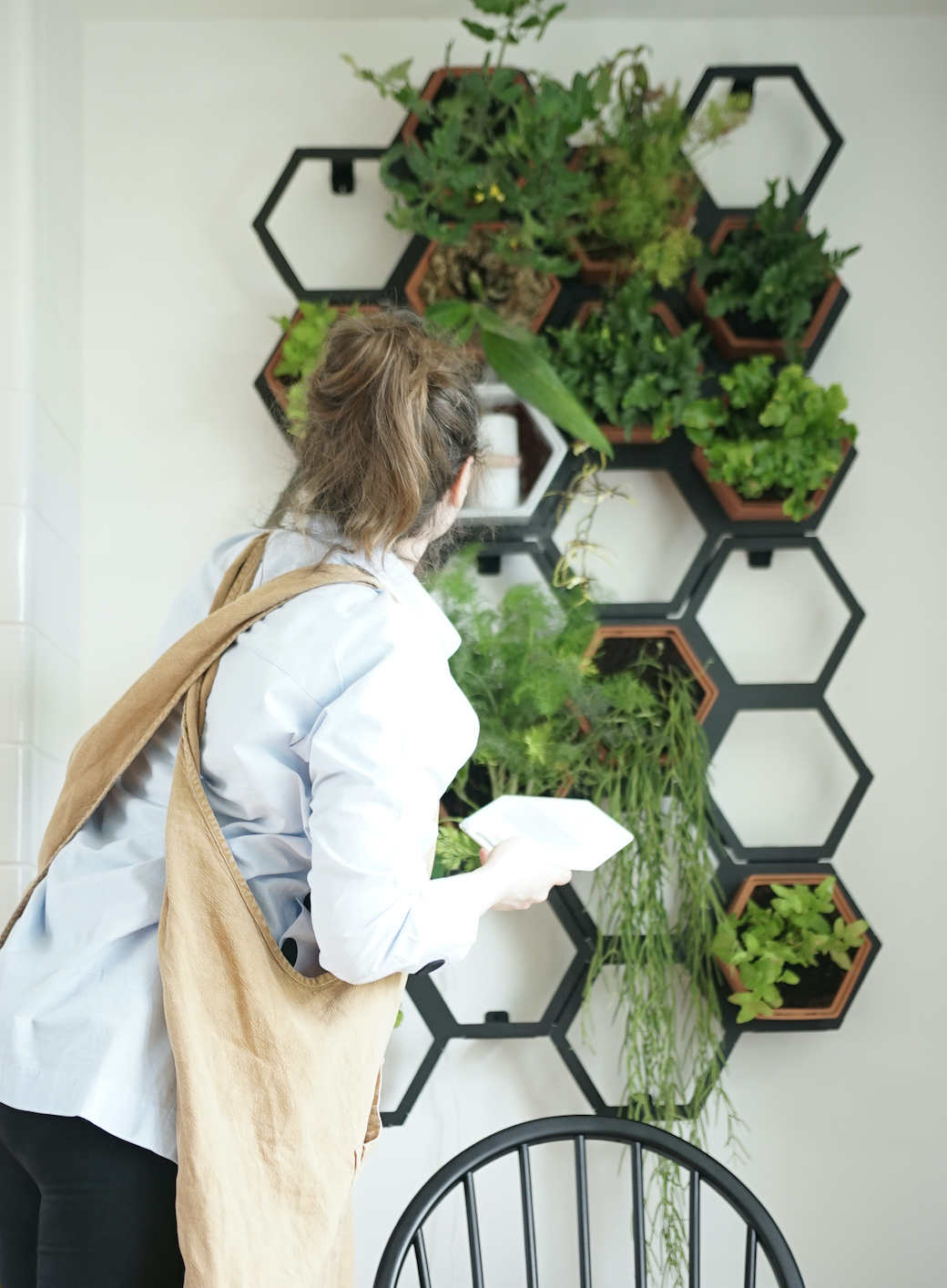
For more information on the modular kits from Horticus, click here.
Follow Horticus on Instagram at @horticusliving.
All photography provided by Horticus.

